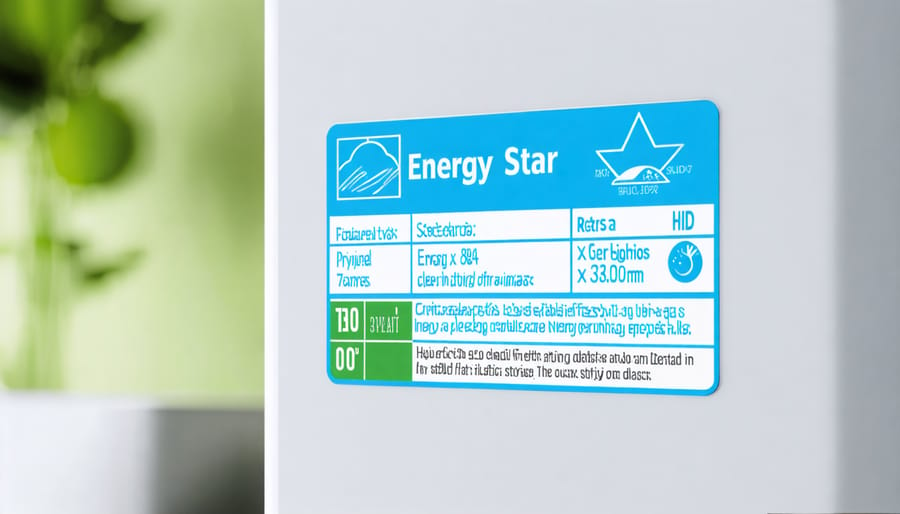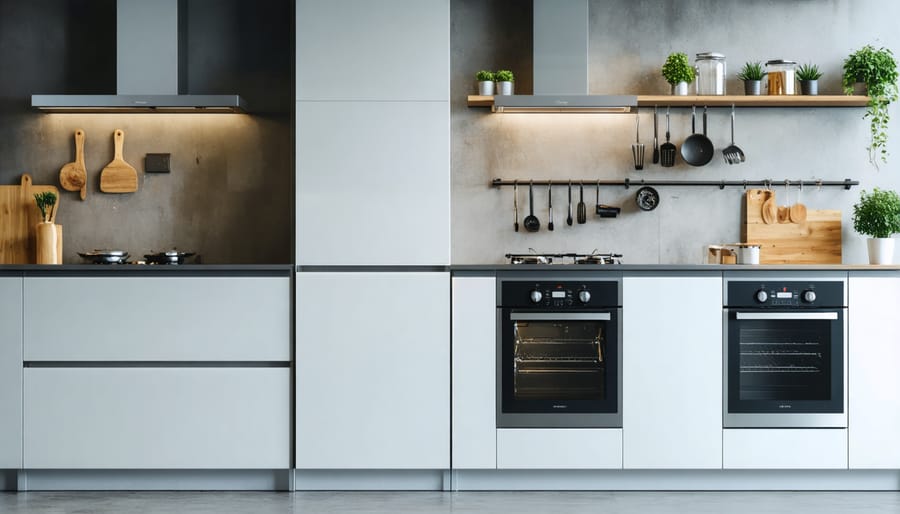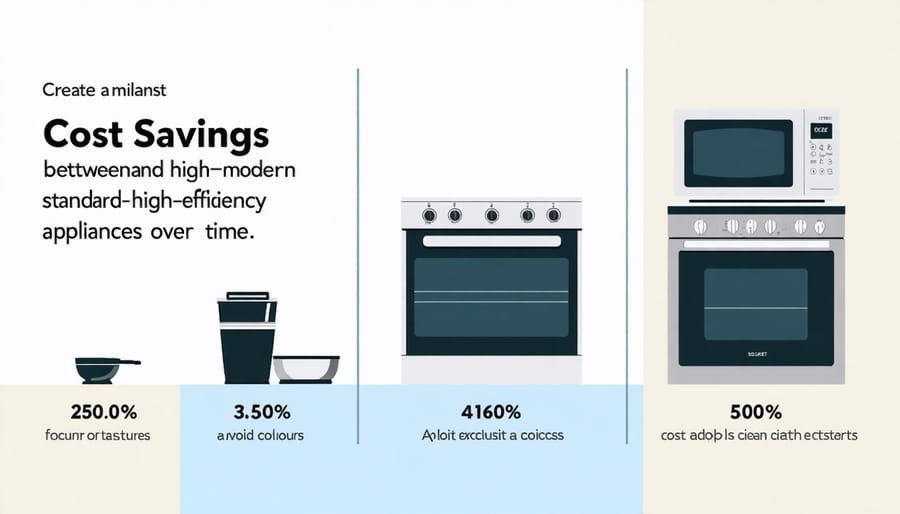High-efficiency appliances represent a revolutionary shift in home energy management, offering a powerful way to cut your power bills while reducing environmental impact. These advanced machines utilize innovative technology to perform everyday tasks using significantly less electricity, water, and resources than their conventional counterparts. Unlike standard appliances that simply get the job done, high-efficiency models incorporate smart sensors, improved insulation, and precision controls to maximize performance while minimizing waste. Whether you’re renovating your kitchen, replacing an aging washer, or simply looking to reduce monthly utility costs, understanding high-efficiency appliances isn’t just about following a trend—it’s about making an informed investment in your home’s future. Modern energy-efficient appliances can reduce household energy consumption by up to 50% compared to older models, making them an increasingly essential consideration for cost-conscious and environmentally aware homeowners.
What Makes an Appliance ‘High Efficiency’?
Energy Star Certification Explained
When shopping for efficient appliances, you’ll often encounter the Energy Star label – but what exactly does it mean? Energy Star is a trusted government-backed symbol that identifies products meeting strict energy efficiency guidelines set by the U.S. Environmental Protection Agency and Department of Energy.
To earn this certification, appliances must undergo rigorous testing and prove they deliver significant energy savings without sacrificing performance or features. For example, Energy Star certified washing machines use about 25% less energy and 33% less water than standard models, leading to substantial benefits of efficient appliances over time.
These standards aren’t static – they’re regularly updated to push manufacturers toward even greater efficiency. When you see the Energy Star label, you can trust that the appliance is among the top performers in its category. The certification also considers the appliance’s entire lifecycle, ensuring it maintains efficiency throughout years of use.
For budget-conscious consumers, it’s worth noting that many utility companies offer rebates specifically for Energy Star certified appliances, making them even more affordable in the long run.

Key Technology Features
Modern high-efficiency appliances come packed with innovative features that make saving energy easier than ever. Smart sensors are a game-changer, automatically adjusting water levels in washing machines based on load size or monitoring food freshness in refrigerators to optimize temperature settings.
Many appliances now feature eco-modes that fine-tune performance for maximum efficiency. For example, dishwashers might extend cycle times but use less hot water, while dryers can detect when clothes reach the perfect dryness level to prevent over-drying and energy waste.
Advanced insulation technology plays a crucial role, especially in refrigerators and water heaters. Multi-layer door seals and improved insulation materials help maintain consistent temperatures with minimal energy input. Similarly, heat pump technology in dryers and water heaters recycles hot air instead of constantly generating new heat, significantly reducing energy consumption.
Variable-speed motors represent another breakthrough, allowing appliances to run at different speeds depending on demand rather than just “on” or “off.” This feature is particularly valuable in HVAC systems and washing machines, where adaptive speeds can reduce energy use by up to 50%.
LED displays and smart home connectivity help you track energy usage in real-time, making it easier to understand and optimize your appliance use. Many models can even be programmed to run during off-peak hours when electricity rates are lower.

Common High Efficiency Appliances for Your Home
Washing Machines and Dryers
High-efficiency washers and dryers represent a significant leap forward in laundry technology, offering substantial water and energy savings while delivering excellent cleaning performance. Modern HE washers typically use 20-66% less water and up to 50% less energy than conventional models, making them environmentally friendly and cost-effective.
Front-loading washers are the most efficient design, using a horizontal drum that requires less water while creating a more effective tumbling action. These machines use advanced sensors to determine the exact amount of water needed for each load and feature high-speed spin cycles that extract more water, reducing drying time.
HE dryers complement these washers with moisture sensors that prevent over-drying and unnecessary energy use. Many models now include heat pump technology, which recycles hot air instead of continuously heating new air. This can reduce energy consumption by up to 50% compared to traditional dryers.
Look for ENERGY STAR certified models, which must meet strict efficiency guidelines. While these appliances may cost more upfront, most households recover the investment through reduced utility bills within a few years of regular use.
Refrigerators and Freezers
Modern refrigerators and freezers have come a long way in energy efficiency, incorporating innovative features that significantly reduce power consumption. Today’s models use advanced insulation materials and improved compressor technology to maintain optimal temperatures while using less electricity. Many units now integrate with smart home technology, allowing you to monitor and adjust settings remotely for maximum efficiency.
Key energy-saving features include LED lighting, which uses up to 90% less energy than traditional bulbs, and adaptive defrost systems that only run when necessary. Door-in-door designs help minimize cold air loss when grabbing frequently used items, while dual cooling systems maintain optimal humidity levels in both the fridge and freezer compartments.
Look for models with the ENERGY STAR certification, which typically use about 15% less energy than non-certified models. Some high-efficiency refrigerators even feature vacation modes that maintain just enough cooling while you’re away, and temperature-controlled drawers that can be customized based on what you’re storing.
When shopping, pay attention to the EnergyGuide label – it’ll show you the estimated yearly operating cost and energy consumption, helping you make an informed decision for your home.
Dishwashers
Modern high-efficiency dishwashers are marvels of water and energy conservation, using sophisticated technology to deliver sparkling clean dishes while minimizing resource consumption. These appliances typically use just 3-5 gallons of water per cycle, compared to the 10-15 gallons used by older models. They achieve this efficiency through advanced spray arms, improved filtration systems, and soil sensors that adjust cycle length based on how dirty your dishes are.
Energy-saving features include enhanced insulation that keeps water hot longer, reducing the need for constant reheating. Many models also offer eco-friendly cycles that use lower temperatures and longer washing times to achieve the same cleaning results with less energy. The heat-dry option has been replaced with more efficient condensation drying in many units, further reducing energy consumption.
Look for models with the ENERGY STAR certification, which indicates they use at least 12% less energy and 30% less water than standard dishwashers. These efficiency improvements not only help the environment but can save you significant money on utility bills over time. Some models even include smart features that can track your energy usage and automatically run during off-peak hours for additional savings.
HVAC Systems
Modern HVAC systems have come a long way in maximizing energy efficiency while keeping your home comfortable year-round. High-efficiency heating and cooling systems typically feature variable-speed motors, which adjust their output based on your home’s needs rather than simply turning on and off. This smart operation helps maintain consistent temperatures while using less energy.
One key efficiency indicator is the SEER rating (Seasonal Energy Efficiency Ratio) for air conditioners and AFUE (Annual Fuel Utilization Efficiency) for furnaces. Today’s high-efficiency AC units achieve SEER ratings of 16 or higher, while efficient furnaces boast AFUE ratings of 90% or better, meaning they convert 90% or more of their fuel into usable heat.
Smart features like programmable thermostats and zoning systems further enhance efficiency by allowing precise temperature control throughout your home. Many modern systems also include advanced air filtration and humidity control, improving both comfort and air quality while maintaining optimal energy use.
Regular maintenance and proper sizing are crucial for ensuring your HVAC system operates at peak efficiency, potentially reducing your energy bills by 20-30% compared to older models.
Real Cost Benefits of High Efficiency Appliances
Initial Investment vs. Long-term Savings
While high-efficiency appliances often come with a higher price tag upfront, their long-term savings can make them a smart investment for your home. Let’s break down the numbers to help you make an informed decision.
Typically, you can expect to pay 10-20% more for a high-efficiency appliance compared to its standard counterpart. For example, a high-efficiency washing machine might cost $800-1,200, while a conventional model might run $500-800. However, the real magic happens in the years that follow.
Consider this: A high-efficiency washing machine can save approximately $70-100 per year in utility costs. Over its 10-year lifespan, that’s $700-1,000 in savings on water and electricity alone. Similar savings apply to other appliances:
– Refrigerators: $30-100 annual savings
– Dishwashers: $25-40 annual savings
– Dryers: $40-70 annual savings
Beyond utility savings, high-efficiency appliances often qualify for rebates and tax incentives, which can offset the initial cost. Many utility companies offer instant rebates ranging from $50-500, depending on the appliance and your location.
Remember that these appliances typically last longer and perform better than standard models, providing additional value through reduced maintenance costs and improved performance. When you factor in all these benefits, most high-efficiency appliances pay for themselves within 3-5 years of purchase.

Available Rebates and Incentives
Making the switch to high-efficiency appliances becomes even more attractive when you factor in the various rebates and incentives available. The federal government offers tax credits through programs like ENERGY STAR®, which can put hundreds of dollars back in your pocket when you purchase qualifying appliances.
Many state governments have their own incentive programs too. These often come in the form of direct rebates, tax deductions, or credits that can significantly reduce your initial investment. For example, some states offer rebates ranging from $50 to $500 for energy-efficient washing machines, refrigerators, and water heaters.
Local utility companies are another excellent source of savings. They frequently run promotional periods with special rebates on high-efficiency appliances. Some even offer instant rebates at participating retailers, making it easier to save right at the point of purchase. Many utility providers also have year-round programs that reward customers for choosing energy-efficient options.
To find available incentives in your area:
– Visit the ENERGY STAR website and use their rebate finder tool
– Check your state’s energy office website
– Contact your local utility provider directly
– Ask retailers about current promotions and rebates
– Look for seasonal sales that combine with existing rebates
Remember that these programs change regularly, so it’s worth researching current offers when you’re ready to make a purchase. Some incentives have specific requirements or deadlines, so be sure to read the fine print and submit any necessary paperwork promptly.
Making the Switch: Smart Shopping Tips
Ready to make the switch to high-efficiency appliances? Let’s make your shopping experience smoother with these smart tips. Start by doing your homework – research different brands and models online, and read genuine user reviews to understand real-world performance.
Before hitting the stores, measure your space carefully. High-efficiency appliances might have different dimensions than standard models, and you’ll want to ensure a perfect fit. Don’t forget to note down the measurements of doorways and hallways to avoid delivery headaches!
When comparing models, look beyond the price tag. Check the Energy Star rating and annual energy consumption estimates – these numbers will help you understand long-term savings. Also, investigate available rebates and incentives in your area, as these can significantly reduce your upfront costs.
Consider these key factors while shopping:
– Water usage ratings (especially for washers and dishwashers)
– Energy Star certification details
– Warranty coverage
– Additional features that might enhance efficiency
– Maintenance requirements
Time your purchase wisely – major appliance retailers often offer their best deals during holiday weekends or at the end of the month. Don’t be afraid to negotiate, especially when buying multiple appliances together.
Finally, ask about professional installation services and proper disposal of your old appliances. Many retailers offer these services, which can save you time and ensure your new high-efficiency appliances are installed correctly for optimal performance.
High-efficiency appliances represent a significant step forward in creating a more sustainable and cost-effective home. As we’ve explored throughout this article, these innovative appliances not only help reduce your monthly utility bills but also play a crucial role in environmental conservation. While the initial investment might be higher, the long-term savings and reduced environmental impact make them a worthwhile consideration for any household.
Remember that energy efficiency isn’t just about saving money – it’s about making smart choices that benefit both your family and the planet. When shopping for new appliances, always look for the ENERGY STAR label and compare EnergyGuide ratings to make informed decisions. Consider starting with replacing your most frequently used or oldest appliances first to maximize your savings potential.
Take action today by conducting an energy audit of your current appliances. Make a replacement plan that fits your budget, and don’t forget to check for local rebates and incentives that can help offset the initial costs. Even small changes, like replacing one outdated appliance with a high-efficiency model, can make a meaningful difference in your home’s energy consumption.
By choosing high-efficiency appliances, you’re not just upgrading your home – you’re investing in a more sustainable future while enjoying modern conveniences and lower utility bills. The time to make the switch is now, and your wallet and the environment will thank you for years to come.
